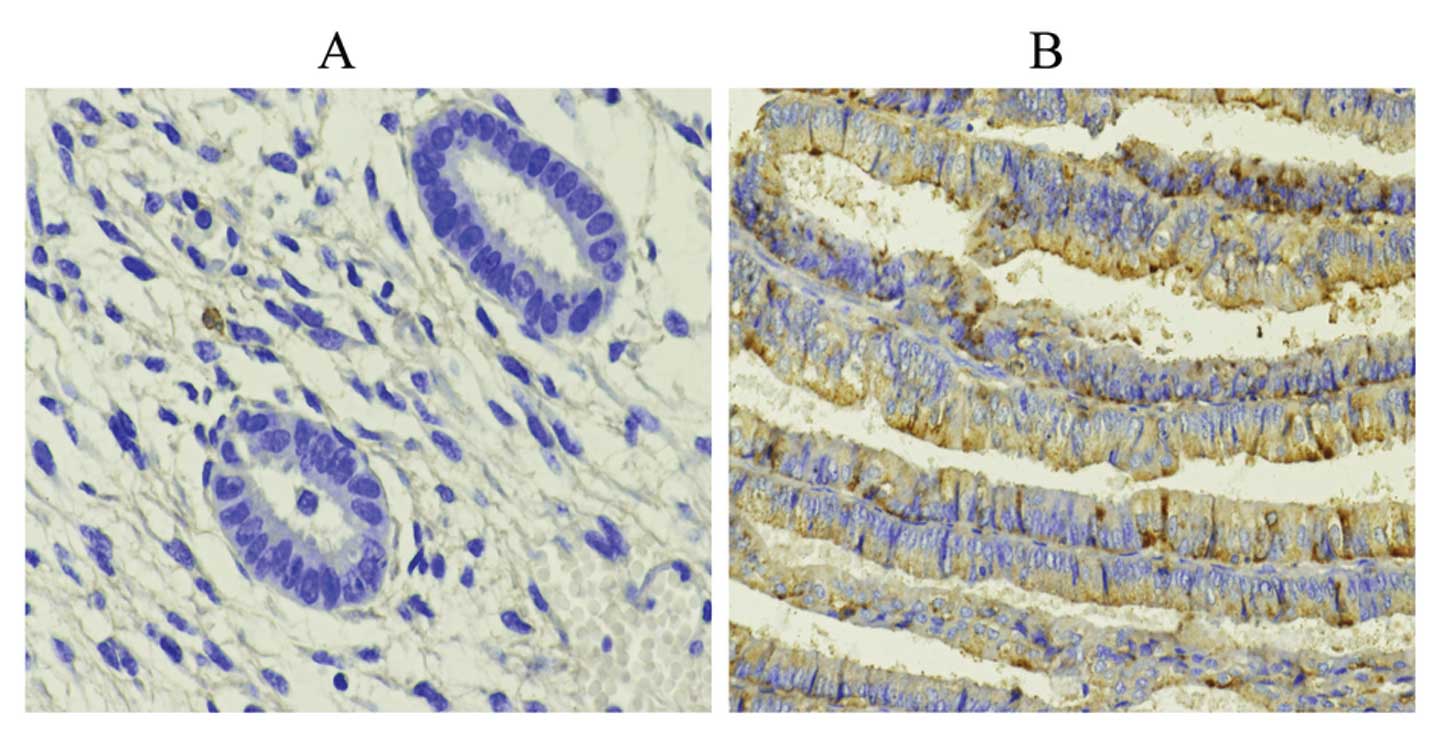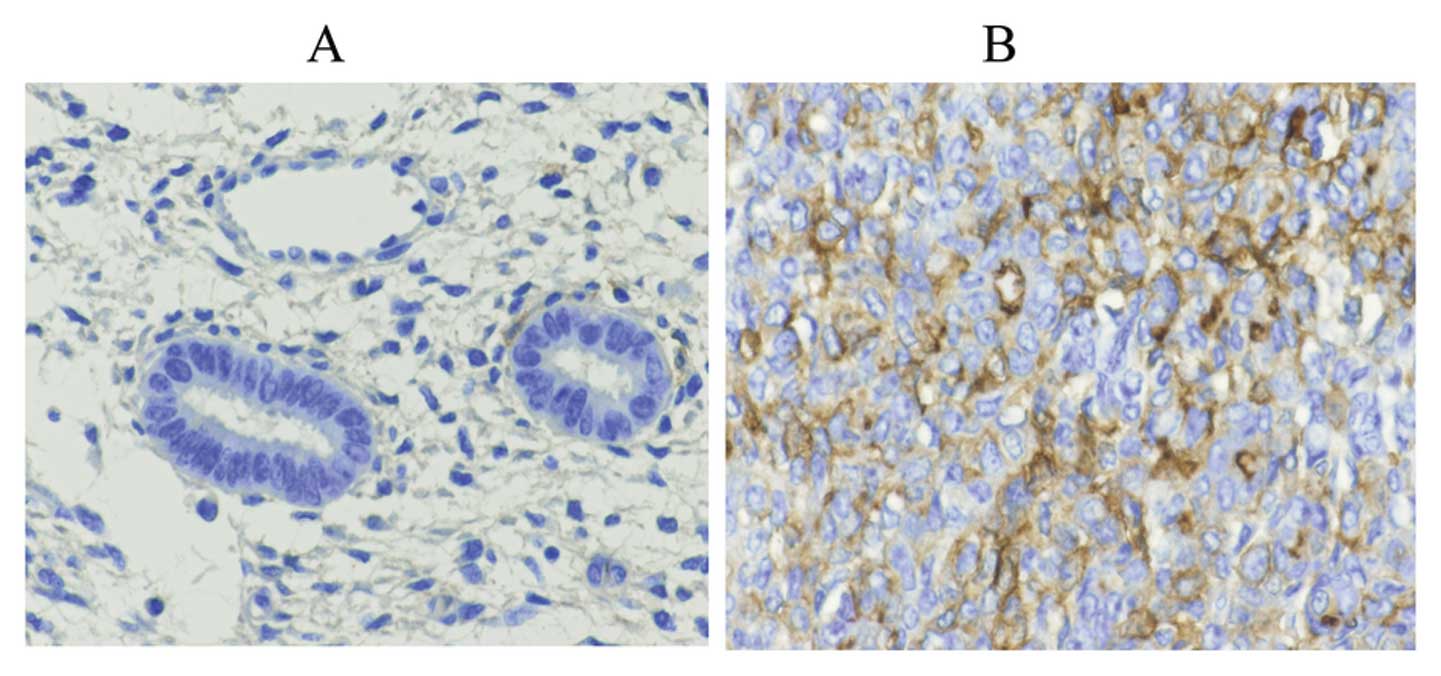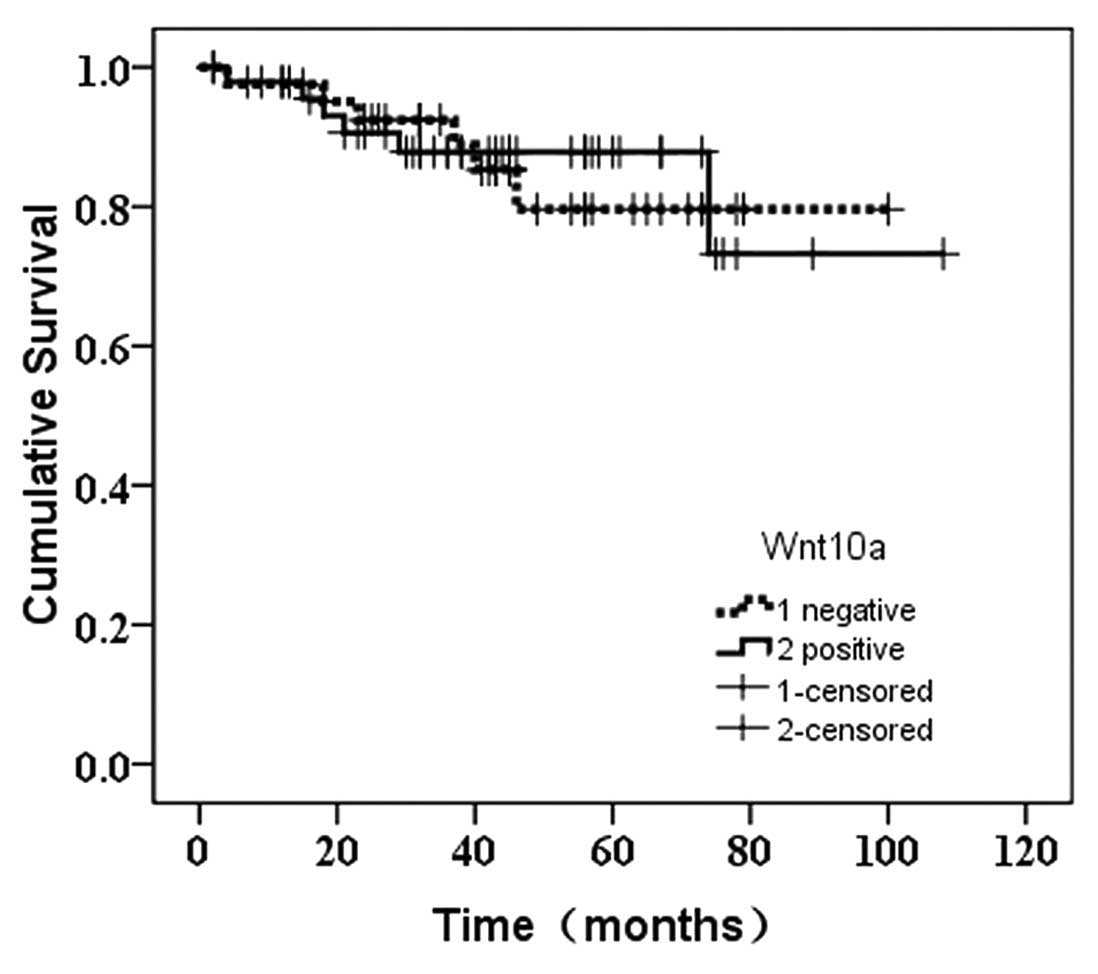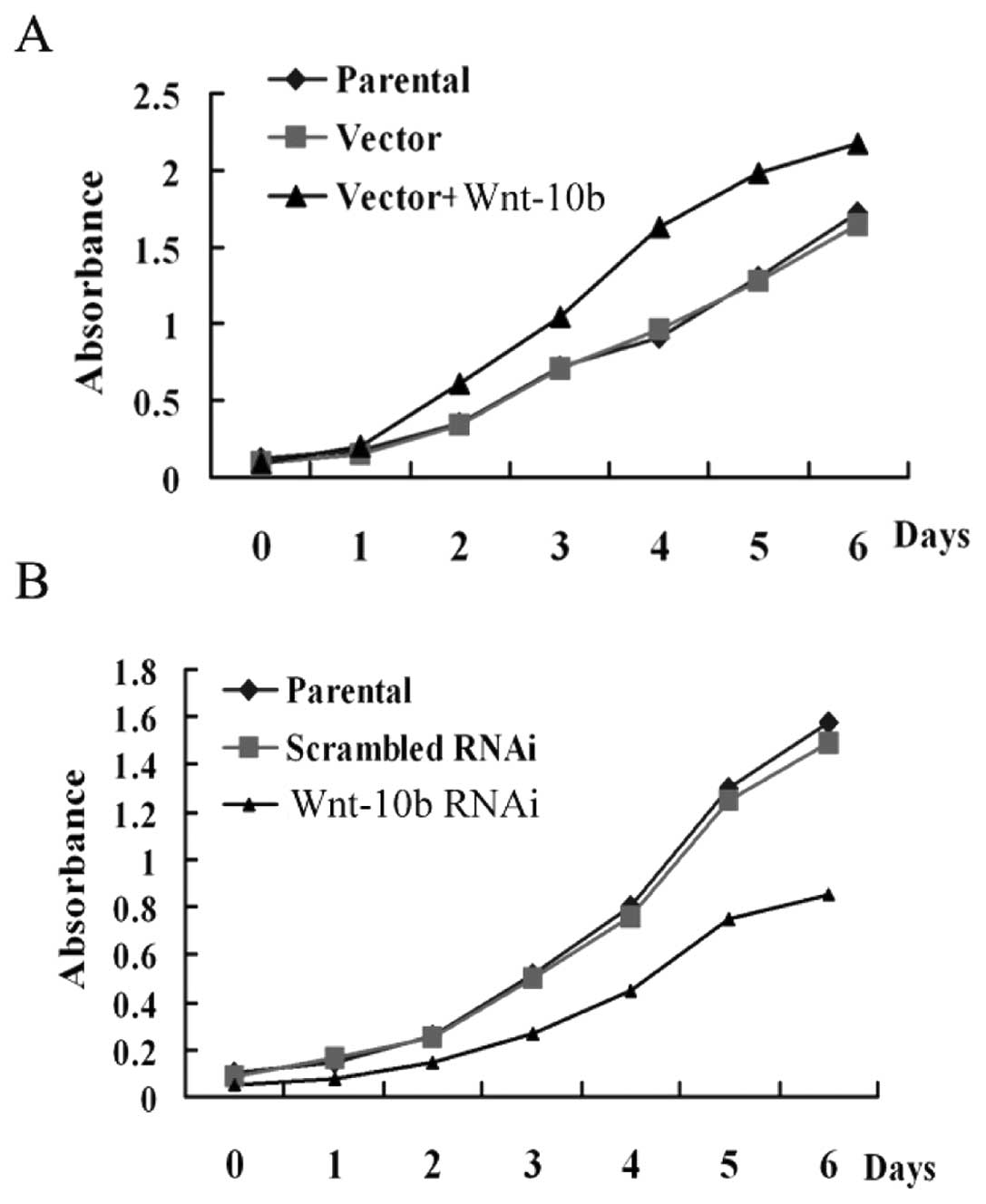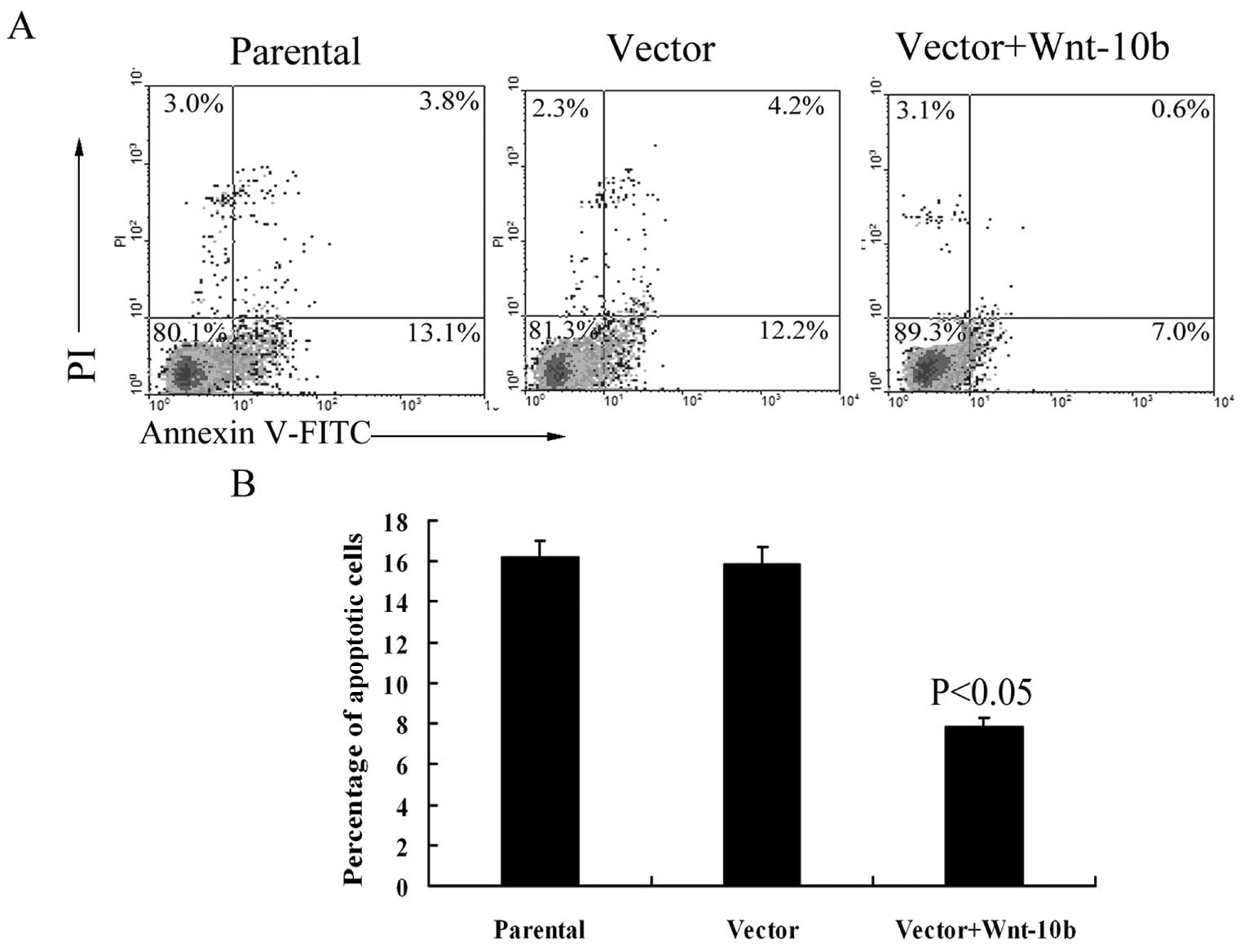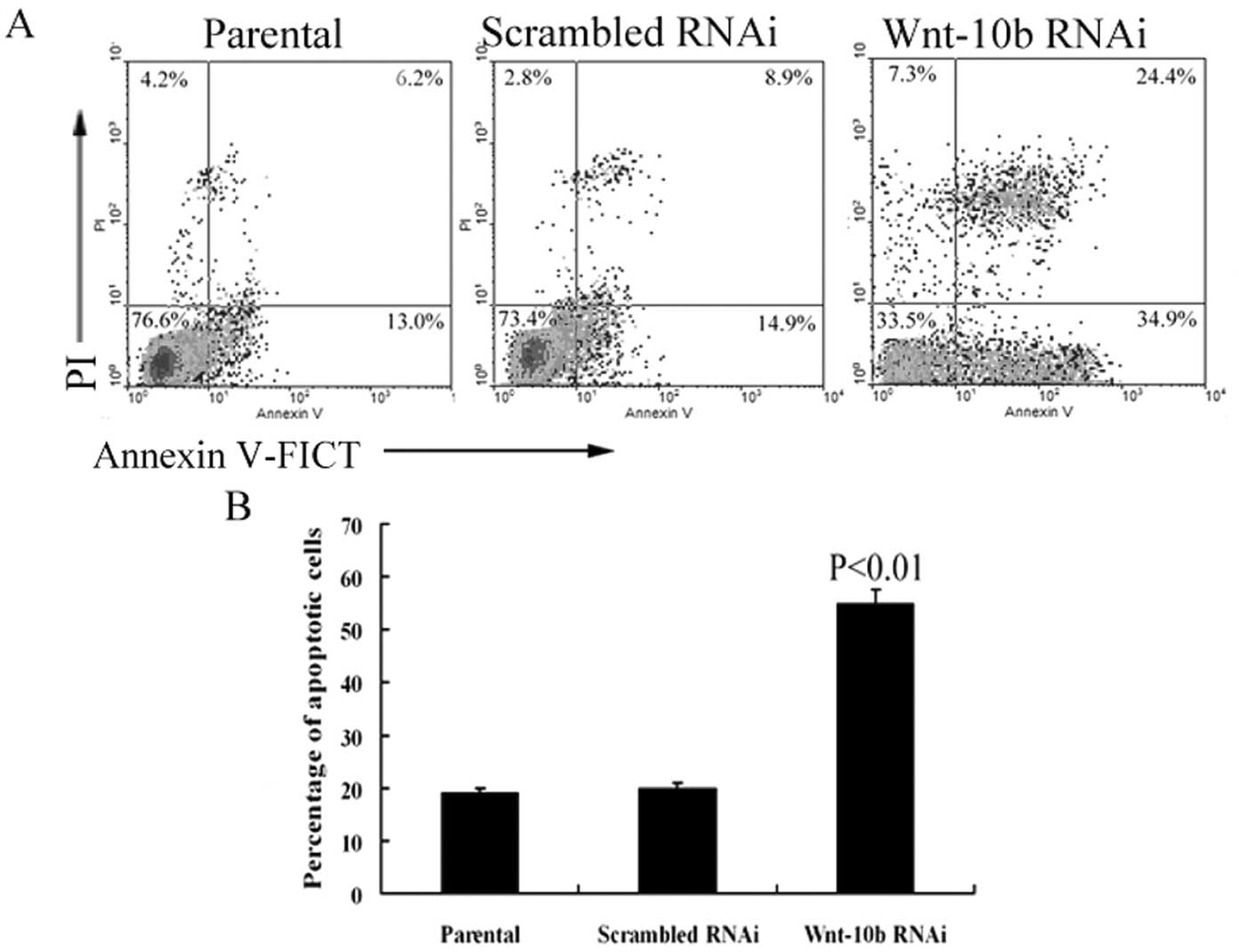|
1
|
Siegel R, Ward E, Brawley O and Jemal A:
Cancer statistics, 2011: The impact of eliminating socioeconomic
and racial disparities on premature cancer deaths. CA Cancer J
Clin. 61:212–236. 2011. View Article : Google Scholar : PubMed/NCBI
|
|
2
|
Yang D and Han L: Year 1969–2003 study on
evolution of endometrial cancer. FuDan Univ J Med Sci. 32:479–483.
2005.
|
|
3
|
Bokhman JV: Two pathogenetic types of
endometrial carcinoma. Gynecol Oncol. 15:10–17. 1983. View Article : Google Scholar : PubMed/NCBI
|
|
4
|
Fleming GF: Systemic chemotherapy for
uterine carcinoma: metastatic and adjuvant. J Clin Oncol.
25:2983–2990. 2007. View Article : Google Scholar : PubMed/NCBI
|
|
5
|
Nusse R: Wnt signaling in disease and in
development. Cell Res. 15:28–32. 2005. View Article : Google Scholar : PubMed/NCBI
|
|
6
|
Katoh M: WNT and FGF gene clusters
(Review). Int J Oncol. 21:1269–1273. 2002.PubMed/NCBI
|
|
7
|
Wend P, Wend K, Krum SA and
Miranda-Carboni GA: The role of WNT10B in physiology and disease.
Acta Physiol (Oxf). 204:34–51. 2012. View Article : Google Scholar : PubMed/NCBI
|
|
8
|
Modder UI, Oursler MJ, Khosla S and Monroe
DG: Wnt10b activates the Wnt, notch and NFκB pathways in U2OS
osteosarcoma cells. J Cell Biochem. 112:1392–1402. 2011.PubMed/NCBI
|
|
9
|
White BD, Chien AJ and Dawson DW:
Dysregulation of Wnt/β-catenin signaling in gastrointestinal
cancers. Gastroenterology. 142:219–232. 2012.
|
|
10
|
Robinson DR, Zylstra CR and Williams BO:
Wnt signaling and prostate cancer. Curr Drug Targets. 9:571–580.
2008. View Article : Google Scholar
|
|
11
|
Mukheriee N, Bhattacharya N, Alam N, et
al: Subtype-specific alteration of the Wnt signaling pathway in
breast cancer: clinical and prognostic significance. Cancer Sci.
103:210–220. 2012. View Article : Google Scholar : PubMed/NCBI
|
|
12
|
Gatcliffe TA, Monk BJ, Planutis K and
Holcombe RF: Wnt signaling in ovarian tumorigenesis. Int J Gynecol
Cancer. 18:954–962. 2008. View Article : Google Scholar : PubMed/NCBI
|
|
13
|
Carmon KS and Loose DS: Development of
bioassay for detection of Wnt-binding affinities for individual
frizzled receptors. Anal Biochem. 401:288–294. 2010. View Article : Google Scholar : PubMed/NCBI
|
|
14
|
Kirikoshi H, Sekihara H and Katoh M:
WNT10A and WNT6, clustered in human chromosome 2q35 region with
head-to-tail manner, are strongly co-expressed in SW480 cells.
Biochem Biophy Res Commun. 283:798–805. 2001. View Article : Google Scholar : PubMed/NCBI
|
|
15
|
Benhaj K, Akcali KC and Oztuk M: Redundant
expression of canonical Wnt ligands in human breast cancer cell
lines. Oncol Rep. 15:701–707. 2006.PubMed/NCBI
|
|
16
|
Saegusa M, Hashimura M, Yoshida T and
Okayasu I: Beta-catenin mutations and aberrant nuclear expression
during endometrial tumorigenesis. Br J Cancer. 84:209–217. 2001.
View Article : Google Scholar : PubMed/NCBI
|
|
17
|
Wang Y, Yang D, Cogdell D, Hu L, Xue F,
Broaddus R and Zhang W: Genomic characterization of gene
copy-number aberrations in endometrial carcinoma cell lines derived
from endometrioid-type endometrial adenocarcinoma. Technol Cancer
Res Treat. 9:179–189. 2010. View Article : Google Scholar : PubMed/NCBI
|
|
18
|
Dellinger TH, Planutis K, Tewari KS and
Holcombe RF: Role of canonical Wnt signaling in endometrial
carcinogenesis. Expert Rev Anticancer Ther. 12:51–62. 2012.
View Article : Google Scholar : PubMed/NCBI
|
|
19
|
Kirikoshi H, Inoue S, Sekihara H and Katoh
M: Expression of WNT10A in human cancer. Int J Oncol. 19:997–1001.
2001.PubMed/NCBI
|
|
20
|
Brennan KR and Brown AM: Wnt proteins in
mammary development and cancer. J Mammary Gland Biol Neoplasia.
9:119–131. 2004. View Article : Google Scholar : PubMed/NCBI
|
|
21
|
Barbolina MV, Burkhalter RJ and Stack MS:
Diverse mechanisms for activation of Wnt signaling in the ovarian
tumour microenviroment. Biochem J. 437:1–12. 2011. View Article : Google Scholar : PubMed/NCBI
|
|
22
|
Kirikoshi H, Sekihara H and Katoh M:
Up-regulation of WNT10A by tumor necrosis factor alpha and
Helicobacter pylori in gastric cancer. Int J Oncol.
19:533–536. 2001.PubMed/NCBI
|
|
23
|
Milovanovic T, Planutis K, Nquyen A, Marsh
JL, Lin F, Hope C and Holcombe RF: Expression of Wnt genes and
frizzled 1 and 2 receptors in normal breast epithelium and
infiltrating breast carcinoma. Int J Oncol. 25:1337–1342.
2004.PubMed/NCBI
|
|
24
|
Kharaishvili G, Simkova D, Makharoblidze
E, et al: Wnt signaling in prostate development and carcinogenesis.
Biomed Pap Med Fac Univ Palacky Olomouc Czech Repub. 155:11–18.
2011. View Article : Google Scholar : PubMed/NCBI
|
|
25
|
Nishida M: The Ishikawa cells from birth
to the present. Hum Cell. 15:104–117. 2002. View Article : Google Scholar : PubMed/NCBI
|
|
26
|
Lustig B and Behrens J: The Wnt signaling
pathway and its role in tumor development. J Cancer Res Clin Oncol.
129:199–221. 2003.PubMed/NCBI
|
|
27
|
Fernandez-Cobo M, Zammarchi F, Mandeli J,
Holland JF and Pogo BG: Expression of Wnt5A and Wnt10b in
non-immortalized breast cancer cells. Oncol Rep. 17:903–907.
2007.PubMed/NCBI
|
|
28
|
Scholten AN, Creutzberg CL, van den Broek
LJ, Noordijk EM and Smit VT: Nuclear beta-catenin is a molecular
feature of type 1 endometrial carcinoma. J Pathol. 201:460–465.
2003. View Article : Google Scholar : PubMed/NCBI
|
|
29
|
Polakis P: Wnt signaling and cancer. Genes
Dev. 14:1837–1851. 2000.
|
|
30
|
Wang Y, van der Zee, Fodde R and Blok LJ:
Wnt/B-catenin and sex hormone signaling in endometrial homeostasis
and cancer. Oncotarget. 1:674–684. 2010.PubMed/NCBI
|
|
31
|
Kirikoshi H and Katoh M: Expression and
regulation of WNT10B in human cancer: up-regulation of WNT10B in
MCF-7 cells by beta-estradiol and down-regulation of WNT10B in NT2
cells by retinoic acid. Int J Mol Med. 10:507–511. 2002.PubMed/NCBI
|
|
32
|
Lu Lu KH, Wu W, Dave B, Slomovitz BM,
Burke TW, Munsell MF, Broaddus RR and Walker CL: Loss of tuberous
sclerosis complex-2 function and activation of mammalian target of
rapamycin signaling in endometrial carcinoma. Clin Cancer Res.
14:2543–2550. 2008.PubMed/NCBI
|















